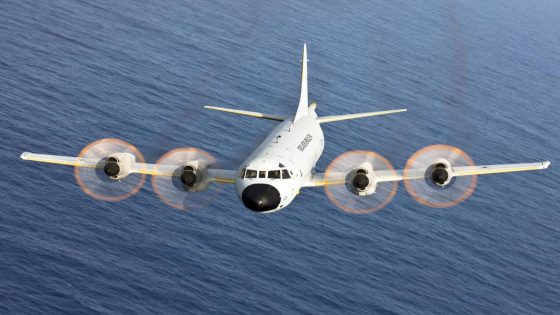SANTIAGO, Chile â Brazilâs Air Force and Embraer are beginning a joint study to look into adapting aircraft already in service to carry out intelligence, surveillance and reconnaissance missions, the local firm announced April 10.
The head of the Air Force, Gen. Marcelo Kanitz Damasceno, and the chief executive of Embraer Defense and Security, João Bosco Costa Jr., attended the companyâs announcement during the FIDAE air show, which runs April 9-14 in Santiago, Chile.
During the presentation, a backdrop showed a C-390 Millennium transport aircraft, a type in service with Brazil, labelled as a maritime patrol aircraft and carrying anti-ship missiles.
The Air Force has started looking for options to replace its P-3AM Orion maritime patrol aircraft beginning in 2031, a military source in the capital of Brasilia told Defense News.
Already, companies appear keen to win a potential contract. Apart from Embraerâs announcement, the American firm Boeing put out a news release just ahead of the air show that emphasized its history in supplying the region with defense platforms.
At the show itself, Tim Flood, Boeingâs senior regional director for international business development in Europe and the Americas, specifically pointed to Brazil as the first potential customer in the region for the P-8, according to an article from Janes.
French defense firm Airbus also attended the show, promoting its C-295 twin turboprop maritime patrol aircraft. The Air Force already operates 10 of them in a maritime search and rescue role.
âA decision is set to be made by 2026,â the military source told Defense News, speaking on the condition of anonymity due to the sensitivity of the topic. âIf the idea of developing a C-390 MPA is favored, there will be no tender, and a contract will be awarded to Embraer soon instead.â
âIf not, a tender for bids will run between 2026 and 2027. The target will be to acquire a minimum of six aircraft, spread in two batches, with [the cost] under current estimations â if P-8 or an equivalent is selected and ordered â amounting to $3 billion,â the source added. âDeliveries of the new MPAs would start in 2031, to be completed in 2036.â³
Why now?
The exploration and refinement of substantial reserves of oil and natural gas in Brazilâs littoral areas in the late 1990s drove the country to bolster its maritime surveillance capability, with the Navy and Air Force both playing critical roles.
However, the Air Forceâs maritime patrol fleet at the time â the small, twin-engine turboprop Embraer P-95 Bandeirante, a version of the Embraer C-95 Bandeirante fitted with a nose-mounted AN/APS-128 radar â lacked the necessary range and endurance, among other capacities.
In the early 2000s, Brazil purchased 12 former U.S. Navy P-3A maritime patrol aircraft. The transaction was followed by a contract award to the Spanish company CASA, a subsidiary of Airbus, to refurbish and upgrade the aircraft. The plan was to modernize eight of them to more closely match the P-3C, with the remaining set of four used as a source of spare parts. They would be known as P-3AM aircraft.
The work led to an increased range and a 16-hour endurance, as well as the fitting of a new mission system built around the Airbus-made Fully Integrated Tactical System. The aircraft also received electro-optical, acoustic and magnetic anomalies sensors. They were also integrated with Boeingâs AGM-84L Harpoon Block II anti-ship missiles.
The P-3AM began entering service in 2011, with the last one delivered in 2014.
But according to the military source, the P-3AM fleetâs maintenance costs have increased substantially in recent years. To keep the P-3AM fleet operating would require âa substantial investment,â the source added, plus they would need upgraded mission systems, driving the cost higher.
Noting âolder platforms also have limitations for capability growth,â the source said Brazil decided âto procure a new aircraft with a larger life service span, and also with a wider margin to grow capacities in order to meet future requirements.â This approach, the source added, would be more cost-effective.
âOptions are being explored, and the idea to develop an MPA version of C-390 is popular, but it is yet to be seen if it is technically and financially feasible. To bring other nations and firms onboard, as customers and industrial partners, may be necessary,â the military source said.
José Higuera is a Latin America correspondent for Defense News.
Source Agencies



